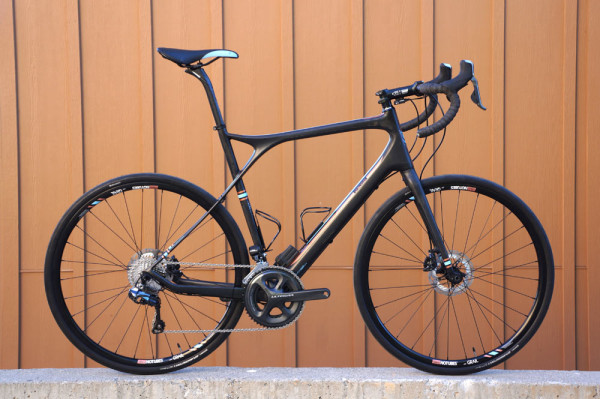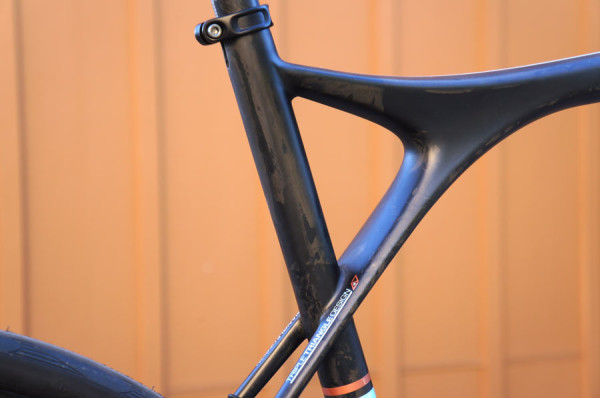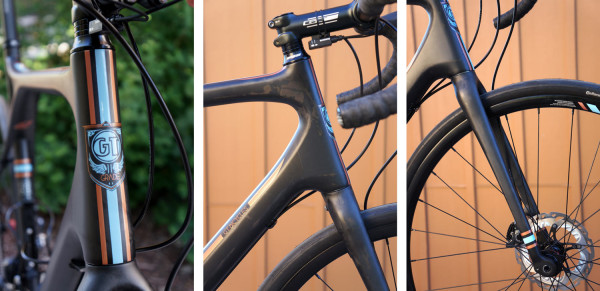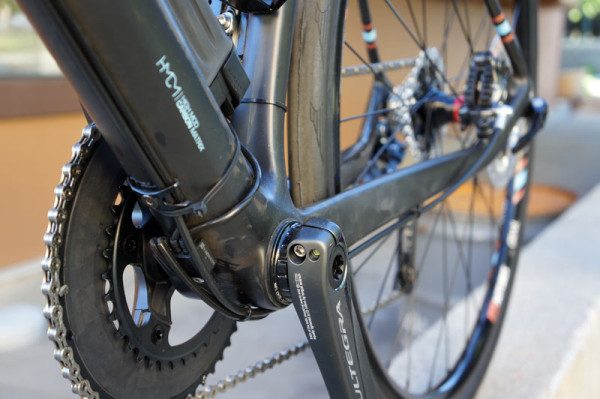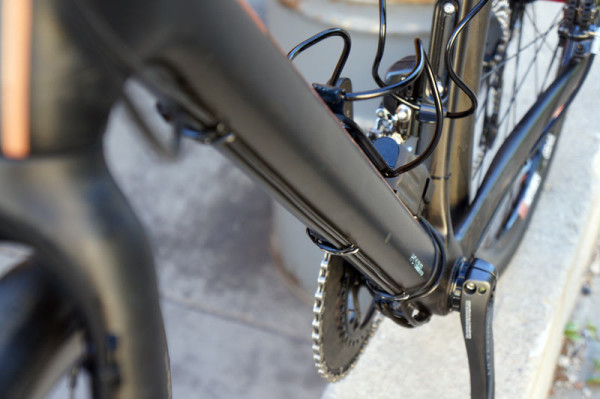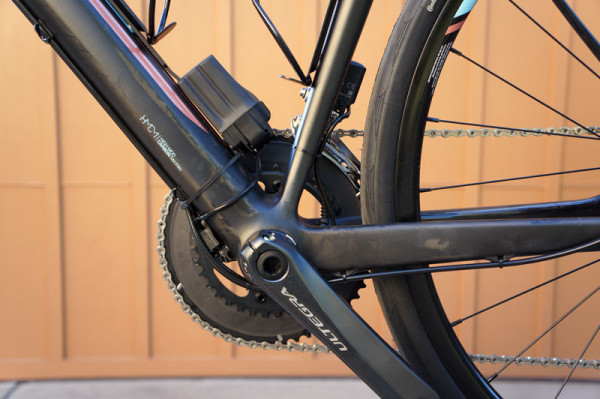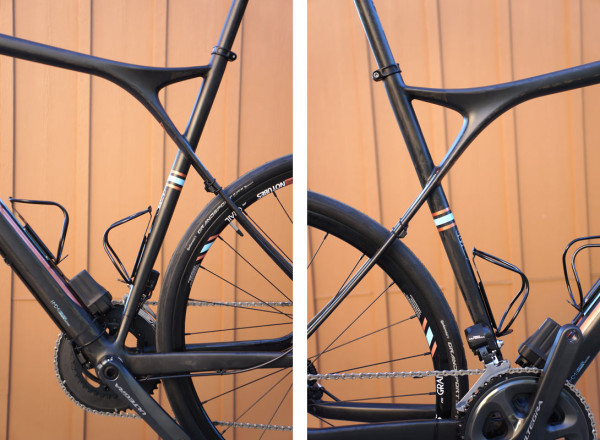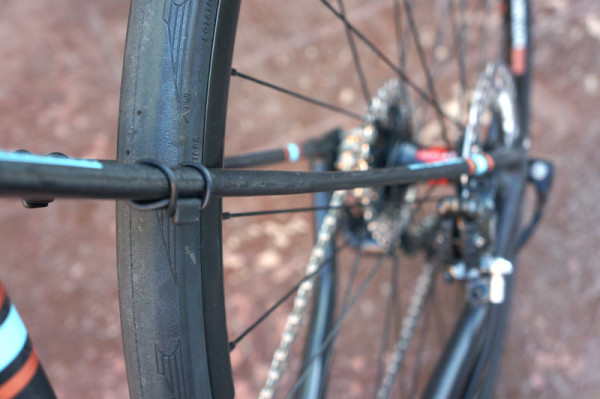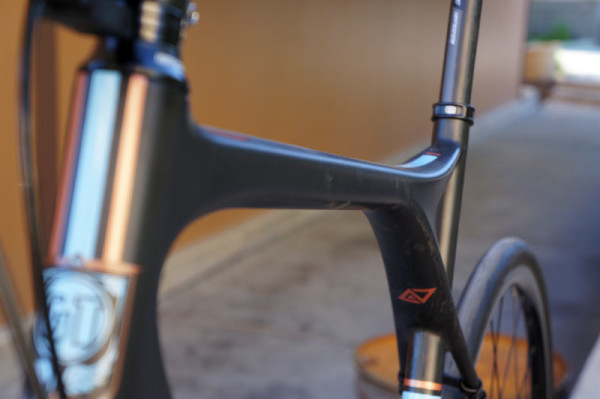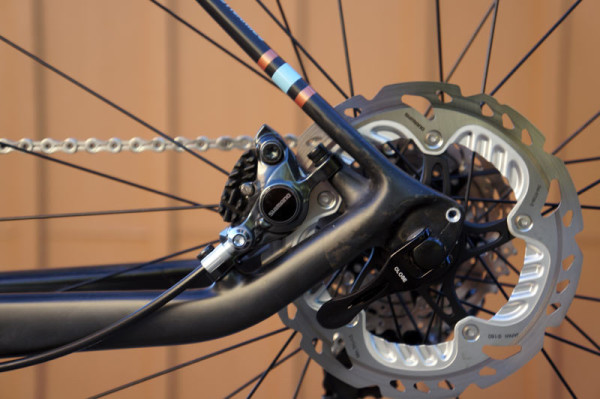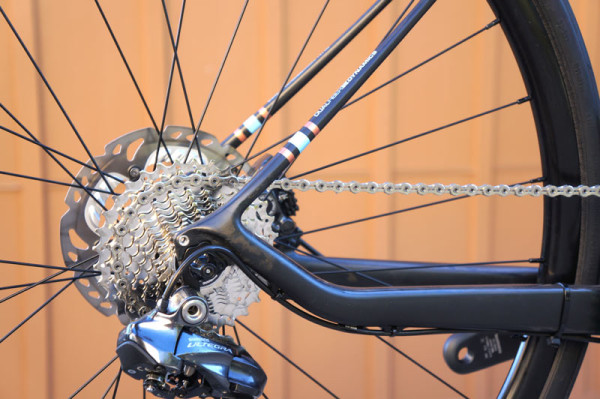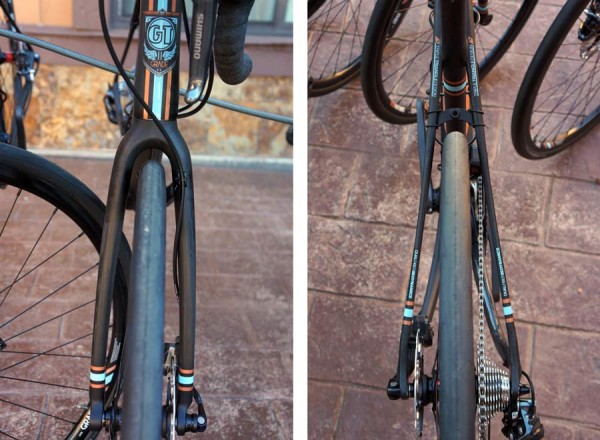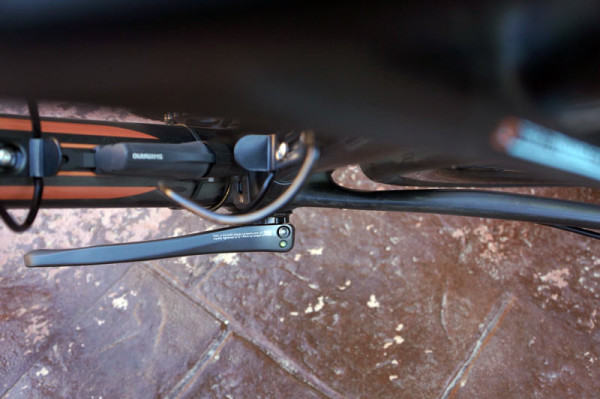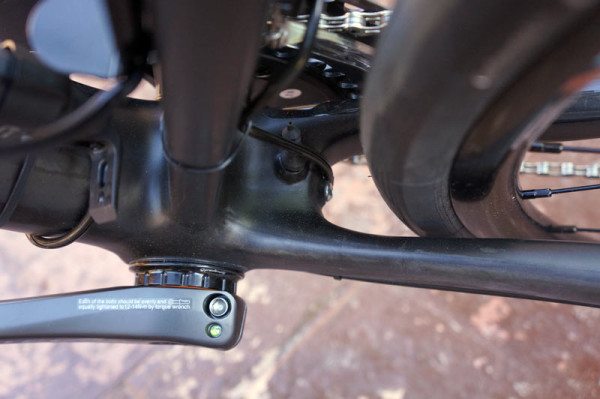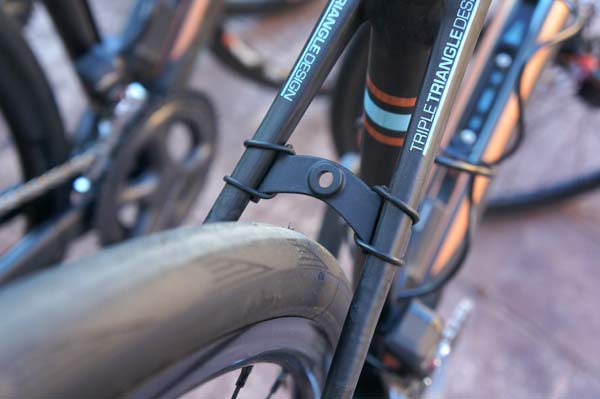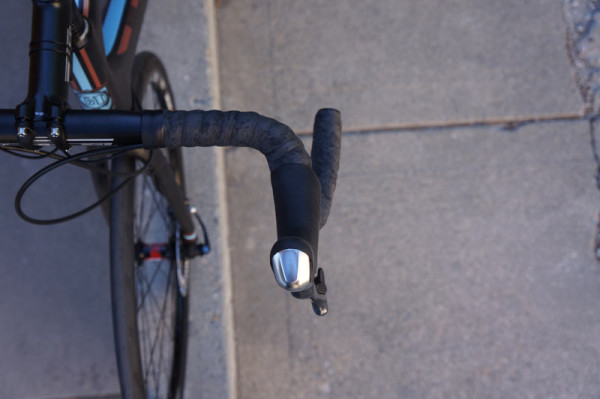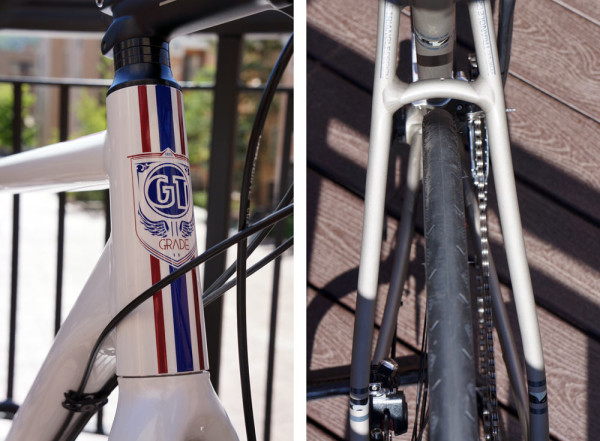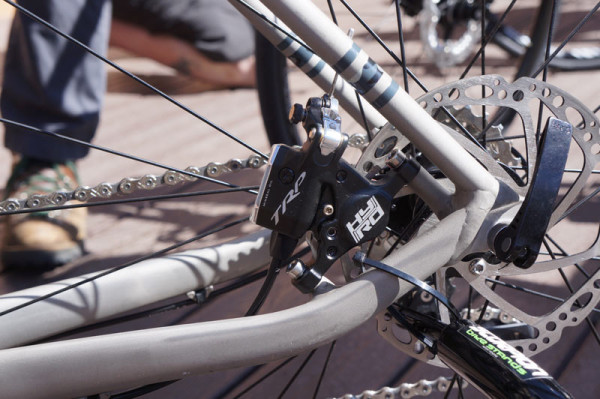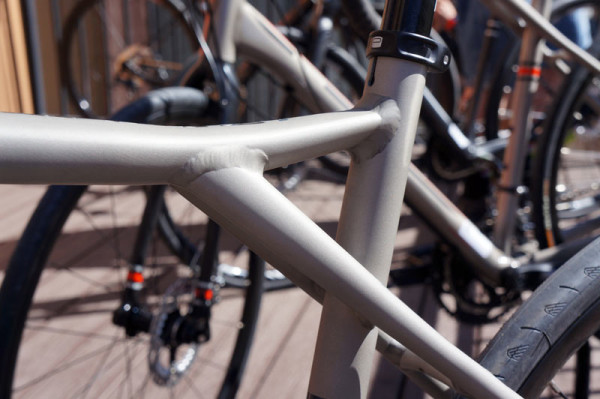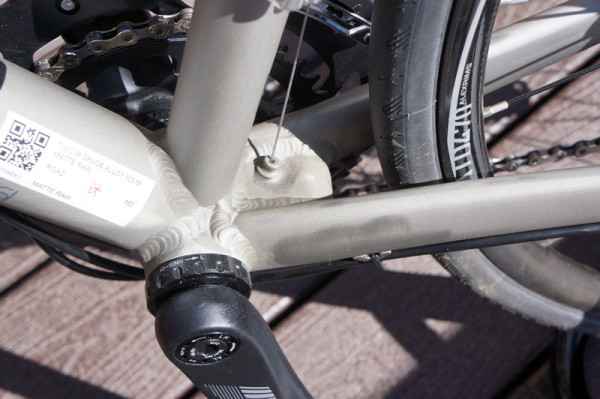In development for three years, the new GT Grade fires a serious shot across the bow of the burgeoning gravel grinder scene with a svelte, racy frame designed to tackle anything you can throw at it.
Some time ago, GT was a little more involved in road. They provided track bikes for the US Olympic team and supplied Lotto Belisol. Six years ago, they provided bikes for the Jelly Belly team. Since then, they’ve been predominantly focused on mountain with the Athertons, Tyler McCaul and others. Their latest crop of full suspension bikes have been well received.
But, there’s no denying the growth in adventure riding, and that growth is worldwide. GT says they’re seeing growth in sportives, fondos and non-sanctioned ride/races in Australia, throughout Europe and elsewhere. And of course we’re seeing a lot more of it in the U.S., too. Since big fat knobbies aren’t always the best way to get there, something new was in order. The people riding these (um, like us) want something that’s a bit more comfortable than a pure ‘cross bike but can handle wider rims and tires than a road bike. And disc brakes, of course. So, yeah, the explosion in gravel riding and racing seems very recent, but thankfully GT saw it coming – their new Grade looks amazing…
Designed to be an all-day bike that offers both comfort and performance, the Grade is made for gran fondos, gravel races and any other sort of riding you like to do. There was absolutely no regard given to UCI design restrictions.
Taller head tube means less spacers to get into a comfortable position. The slightly lower BB (somewhere between road and ‘cross bikes) and a longer wheel base adds a lot of stability. A slightly slacker head angle complements the stability, particularly at speed and when descending.
They wanted to make its foundation as stiff and strong as a high performance motorcycle. A torsionally stiff platform would provide two benefits: Maximum power transfer on the bottom, and a supportive structure to build compliance into the top half.
To do this, they started with a PFBB30 shell and 1-1/8 to 1-1/4” tapered head tube.
That gave them room to run a massive downtube with a roundish, octagonal cross section that’s reinforced with hi-mod carbon fiber.
The chainstays are boxy, creating a stable bottom half of the bike. GT’s reps acknowledged not everyone loves pressfit 30 BB’s, but they needed the size to get the desired stiffness. So they’ve spec’d appropriate models with the Praxis bottom bracket, which threads together to create a solid, tight fit and runs Shimano’s 24mm spindle cranks on PFBB30 frames.
With such a killer base, the top half could be made to flex and absorb bumps. Wider set seatstays add lateral stability, but they’re super thin and made with a solid glass fiber core to add a lot of vertical compliance. No, not carbon fiber, glass fiber, but they’re wrapped in carbon for protection. The thinness gives them a low bending moment of inertia (meaning they react quickly).
Andy Schmidt, CSG’s design engineer, says the glass fibers have a similar strength to low-mod carbon fibers, but flex better and more easily. They pre curved them to further help them start moving, sort of like a preload. At the axle, they moved the contact point just behind the dropout, giving the wheel a tiny bit more leverage over the system, too.
But that’s only half the story. The seat tube starts off narrow to hold a 27.2 post, then grows in diameter until finally flattening out at the bottom. That flat section creates a leaf spring effect, allowing it to bend, too. As the seatstays cross the seat tube in GT’s trademark triple triangle design, they push into the top tube, which is also designed to flex thanks to specific layups and shapes.
Put it all together and you get up to 10mm of deflection at the top of the seatpost. That’s just from the frame – a good flex seatpost would add to that. And the triple triangle design transfers vibrations away from the seat tube, which should reduce rider fatigue.
Up front, there’s a monocoque carbon fork with 15mm thru axle on the high end models. Lower end models use a carbon fork with alloy crown and steerer that uses a standard 9mm QR. Specs are 493mm axle-to-crown with 45mm offset.
The carbon fork design adds more compliance by using a very short tapered section and thinner legs with a leading dropout design. Since a fork’s steerer tube flexes quite a bit, and a straight 1-1/8” steerer would be the most comfortable, they kept the tapered section at the bottom very short. The benefit is the stiffness gains in steering precision without sacrificing comfort.
Brakes are 160mm direct mount front and rear. They figured more powerful braking trumped a minor weight savings.
Not sold yet? Frame weight for the carbon is a very, very light 965g (size 56).
One of the other main considerations was keeping it affordable. The top end maxes out at $3,300 and the Grade alloy bikes start at just $800. Some of the features that make that happen are keeping all cable routing external. They borrow the cable management from their mountain bikes, making for easy servicing, too. For now, that means no electronic-specific wire routing options, which is why you’re seeing a not-very-integrated execution of mounting Di2 to the bike photo’d. (The top end models use Shimano’s new RS685 mechanical shifters with hydraulic brakes, but they’re not available yet so our test bikes were all equipped with Ultegra Di2)
Versatility: By running a standard 27.2 post and other common standards, you have a lot of upgrade potential. They created add-on rear fender mounts for the seat stays, and the frames all have fender mounts, with rack mounts on the alloy models.
There’s tire clearance for up to 35c knobbies, though it’s a bit tighter at the chainstays than the seatstays.
It’s refreshing to see a brand using premium products like the Praxis BB adapter.
A strap-on fender mount keeps the seatstays lean and mean when not in use.
Another nice touch is the new GT Drop-Tune handlebar with 14º flair in the drops. Top models use a lighter 2000-series alloy, lower models get 6061, but all use the same flaired shape.
ALLOY MODELS
The 6061 double butted alloy frames comes in at about 1300g. Schmidt designed it to have the same flex/movement pattern as the carbon bike, but it doesn’t get quite as much deflection. He also designed the Cannondale Synapse and says the alloy Grade beats the alloy Synapse in deflection and comfort.
What it lacks in lightweight and cush, though, it makes up for with integrated rack mounts.
The look and shape of the alloy frames is very similar to the carbon ones.
Full length cable housing for shifting and braking keep things clean and make for much easier service.
BUILD OPTIONS
This is just a quick overview until we get full spec sheets. All pricing is for U.S. market.
Grade Carbon Ultegra
– Full carbon fork
– BR-R685 mechanical shifting w/ hydro brakes
– Ultegra 11-speed with 52/36 and 11-32 cassette
– Stan’s NoTubes Grail Road Disc wheels
– Continental Ultra Race 28c tires
– GT Drop-Tune 2XXX handlebar
– FSA K-Force Light post with Fizik Aliante MG saddle
– $3,299 (US)
Grade Carbon 105
– Full carbon fork
– Ultegra 11-speed shifters and BR-R685 hydro brakes
– 105 11-speed drivetrain
– Stan’s NoTubes Grail rims on non-series Centerlock hubs
– Continental Ultra Race 28c tires
– GT Drop-Tune 6061 handlebars
– $2,599
Grade Alloy X
– Full carbon fork
– Ultegra 11-speed shifters and BR-R685 hydro brakes
– 105 11-speed drivetrain
– Continental Ultra Race 28c tires
– GT Drop-Tune 6061 handlebars
– $1,749
Grade Alloy 105
– alloy/carbon fork
– TRP HyRD brakes
– 105 11-speed drivetrain
– FSA cranks
– Continental Ultra Race 28c tires
– GT Drop-Tune 6061 handlebars
– $1,299
Grade Alloy Tiagra
– alloy/carbon fork
– TRP Spyre
– Tiagra 10 speed
– FSA Vero 50/34 x 12-28 cassette
– Continental Ultra Race 28c tires
– GT Drop-Tune 6061 handlebars
– $1,099
Grade Alloy Sora
– alloy/carbon fork
– Bangle mechanical calipers
– Sora 9 speed
– FSA Tempo 50/34 x 12-28 cassette
– Continental Ultra Race 28c tires
– GT Drop-Tune 6061 handlebars
– $899
Grade Alloy Claros
– alloy/carbon fork
– Bangle mechanical calipers
– Claris 8 speed
– FSA Tempo 50/34 x 12-28 cassette
– Continental Ultra Race 28c tires
– GT Drop-Tune 6061 handlebars
– $799
The U.S. will only see complete bikes at first, other markets may get a frameset depending on demand.
